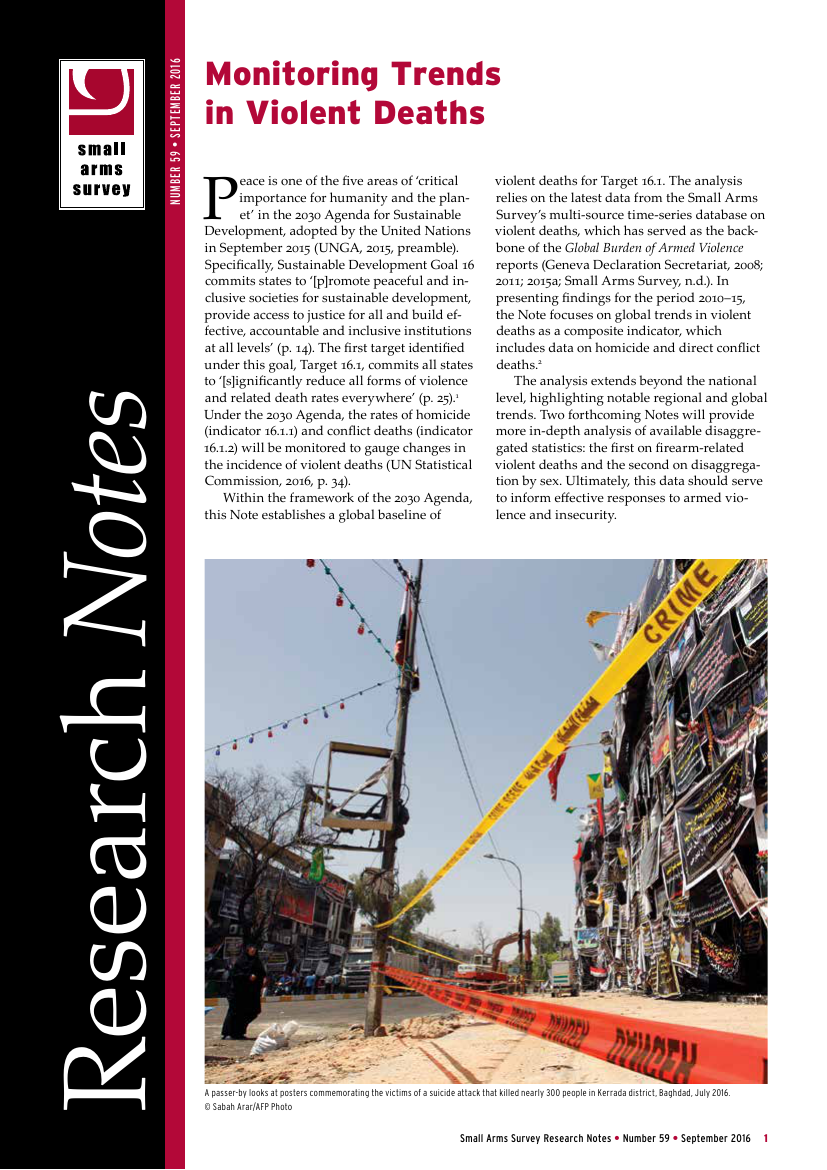
Monitoring Trends in Violent Deaths (Research Note 59)
In the framework of the 2030 Agenda for Sustainable Development, the Small Arms Survey is pleased to announce a series of reports designed to support global efforts to reach targets under Sustainable Development Goal 16 (SDG16). To promote the sharing of information and encourage collaboration in this context, the Survey is also providing online access to its updated database on violent deaths and corresponding interactive maps.
Under SDG16, Target 16.1 commits all states to ‘significantly reduce all forms of violence and related death rates everywhere’. Monitoring Trends in Violent Deaths, the first in a new series of SDG16 reports, establishes a global baseline of violent deaths for Target 16.1, with the aim of helping states to gauge changes in the incidence of violent deaths—a composite indicator comprising data on homicide and direct conflict deaths.
Key findings of this report include the following:
- In 2010–15, an average of 535,000 people died violently every year. This global estimate is higher than the ones for the periods 2004–09 and 2007–12.
- A growing number of people are dying in conflict: while an annual average of 70,000 deaths were recorded in 2007–12, the figure rose to 90,000 in 2010–15. The armed conflicts in Afghanistan, Iraq, and Syria are responsible for a large proportion of these deaths.
- The global homicide rate is continuing its decrease, but not enough to offset the increase in conflict deaths in 2010–15.
- The vast majority (83 per cent) of victims of fatal armed violence lose their lives outside of conflict zones. Direct conflict deaths account for the remaining 17 per cent.
- The global distribution of violence is becoming increasingly unequal: fewer countries are registering high violent death rates (above 20 per 100,000 population), but their average violent death rates are on the rise.
- In absolute numbers, more lives were lost to violence in 2015 in large countries that were not experiencing conflict, such as Brazil and India, than in war-torn Syria.
The analysis relies on data from the Small Arms Survey’s database on violent deaths. The data—which includes figures on firearm homicides and female homicide victims—extends through the end of 2015 or the latest available year. The updated database on violent deaths and corresponding interactive maps can be consulted on the Small Arms Survey’s website.
Have your say about Small Arms Survey publications and products: take 5 minutes to fill out our questionnaire.